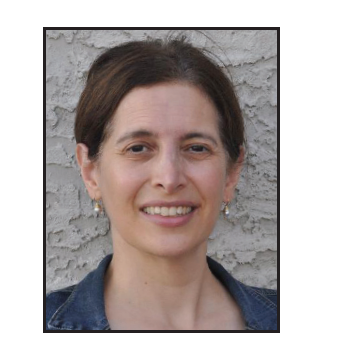Wrapping up Nutrition Month: 'Food is Medicine' guiding principle of nutrition research
Food is medicine for people between the ages of 0 to 100+ years.
It may sound simple, but it is a profound statement that guides the research within Nutrition and Food Services (NFS) at the Saskatchewan Health Authority (SHA).
“This is true whether you live at home, in a long term care home or are in hospital,” says Roseann Nasser, Research Dietitian, SHA. “Improving patient care is so important and the research possibilities and opportunities for nutrition research are many.”
Stephanie Cook, Executive Director NFS, SHA, agrees.
“As a student, I really enjoyed the science of nutrition and spent a lot of time working with test tubes and assays to measure the effects of specific nutrients on the body. I thought I would spend a lifetime doing this sort of work. However, it didn’t take long for me to discover that food is so much more than the sum of its parts, and it was this realization that changed the direction of my research interests.”
March is Nutrition month, and there is significant research in this area in the SHA. Cook says her favourite research projects over the years have been those aimed at challenging the ‘hospital food’ stereotype.
“A few years ago, we devised a study to test our theory that hospital food doesn’t actually suck,” she explains. “Rather, it is just so mired in rhetoric that people believe it must be true.”
To test this, hospital staff at one location were asked to taste items from the patient menu and rate its quality. At the same time, staff from another location were asked to taste the same food items but informed them they were trialing new menu items for the cafeteria menu.
As expected, the group evaluating the hospital food rated it poorly, noting it to be bland, tasteless and lacking freshness. However, the participants that were blinded to the true intent of the food they were eating rated the same menu items very favorably, indicating they would like to see them added to the cafeteria menu (that’s right, actually pay money to eat hospital food!).
Turns out, patients liked the food, too. In 2019, the NFS team led a national study called The Good Food Project, which surveyed nearly 1800 patients in 44 hospitals across Canada, including several hospitals within the SHA. Saskatchewan hospitals ranked amongst the highest when it comes to meeting patients expectations, says Cook.
“While studying the quality of hospital food may seem trivial to some, it’s important to remember that food is medicine and when patients like the food, they eat more of it and eating more food matters,” says Cook.
Data from the Canadian Malnutrition Task Force, which included patients from two Saskatchewan hospitals, found 45% of patients to be malnourished on admission and being malnourished was a predictor of prolonged length of stay (an additional two to three days) as well as an increased cost to hospitals of $2 billion/year pre-COVID.
“Yet, hospital malnutrition is not always recognized or treated,” says Nasser.
Over the last 10 years, NFS has participated in four national studies of hospital nutrition care practices, looking at the incidence of malnutrition on admission, and then contributing to the development and implementation of a nutrition care pathway to prevent, detect and treat malnutrition in adults as part of the More 2 Eat Phases 1 and 2 research projects.
The Pasqua Hospital was one of 5 hospitals in Canada chosen to participate in the More 2 Eat (Phase 1) that implemented a new nutrition care pathway, a team-based approach to nutrition care. For this project, NFS also worked with Canada’s First Accountable Care Unit (ACU) medicine unit at the Pasqua Hospital. When the ACU was spread to three other units, the More 2 Eat study followed.
A critical step of the nutrition care pathway is malnutrition risk screening, which occurs on admission, explains Nasser. Nursing staff identify patients who are at malnutrition risk, and then dietitians assess to determine appropriate nutrition intervention. Food service workers play an important role by communicating how much the patient has eaten at each meal. A patient’s daily food intake is reported at bedside rounds the next day to patients, families and the health care team.
“We know that if the patient eats 50% or less of the food provided, this can increase the length of stay and increase risk of mortality,” explains Nasser.
Implementing the nutrition care pathway locally and participating in these national projects led to the development of a national standard on malnutrition for Canadian hospitals. The standard was recently approved by the Standards Council of Canada as a National Standard of Canada and published in September 2021 by Health Standards Organization. Select criteria from the standard will be prototyped, tested and evaluated as a required organizational practice.
“These findings send a clear message that food more than matters: it is invaluable not only for healing and recovery but also for the comfort and joy that it brings,” says Cook. “Through my experiences with conducting research, I have learned that data can be a powerful commodity – it can transform a want into a need and move an idea from a wish list to an action list.”
The NFS team is always on the lookout for more research opportunities to assist in redefining how food is valued in healthcare, including exploring how to build a more local and sustainable food system across the SHA.
“Food is medicine,” reiterates Nasser. “We all need nutrition: it improves growth, healing and quality of life.”
Read about more NFS research projects below:
Staff perception of a mealtime management educational video for training in long term care homes
The NFS created a mealtime management video to be a teaching tool for staff in long term care homes.
“Good mealtime experiences will help keep residents independent and happy. This will result in a fulfilling work atmosphere for staff, too,” notes the video.
NFS also created a study to determine if staff would perceive the mealtime management video to be beneficial and useful tool. A total of 769 surveys were completed at 28 long term care homes in Canada.
“Staff found the video to be useful and were more knowledgeable about mealtime management after watching the video,” says Nasser. You can watch the video here.
Validation of Fenton Preterm Infant Growth Chart
Growth assessments are critical for preterm infants to assess nutrition care. The Neonatal Intensive Care Unit (NICU) team at the Regina General Hospital started to use the Fenton preterm infant growth chart for head circumference, weight and length in 2005-2006. “We needed a new growth chart as the previous one was difficult to assess growth patterns,” explains Nasser. NFS worked with Dr. Tanis Fenton, and together received three funded grants from the Canadian Foundation for Dietetic Research Practice to validate the Fenton preterm infant growth charts to improve understandings of how preterm infants should grow. Data was collected from Calgary, Regina and San Diego to inform smoothing of the growth curve for postnatal growth which had never been done before. The results showed that the growth of the infants from the 3 centers was similar and they had great weight gains superior to previous American growth patterns of preterm infants of similar size. This finding suggests that current practices are helping support better preterm infants’ growth, and also reported which growth patterns are associated with adverse outcomes and which patterns are expected of preterm infants. The Fenton preterm infant growth chart is used in NICUs in Saskatchewan and across the world.
USask Student Projects
Every year, nutrition students from the University of Saskatchewan complete a practical training program in the SHA to become dietitians. One of the enabling activities is the development and completion of a research project. The ideas for the research projects come from physicians, nurses, dietitians, and professors. The student research projects help NFS to re-assess current practice and implement new practice changes in public/community health, hospital and food services. Some of the student projects are:
- evaluating the effectiveness of 3-3minute YouTube pulse cooking videos to teach the public,
- patients’ perceptions of a malnutrition diagnosis,
- looking at school food fundraiser programs,
- reviewing practices of diet progression in hospital for patients with pancreatitis,
- reviewing practices for patients with new ileostomies,
- evaluating a new pre-printed order for patients with new ileostomies and high output ileostomy.
The ileostomy pre-printed order is now part of Enhanced Recovery After Surgery order set in surgery. “These are only a few of the many projects that have been completed to date and ongoing. They have influenced and changed nutrition practice,” notes Nasser.




